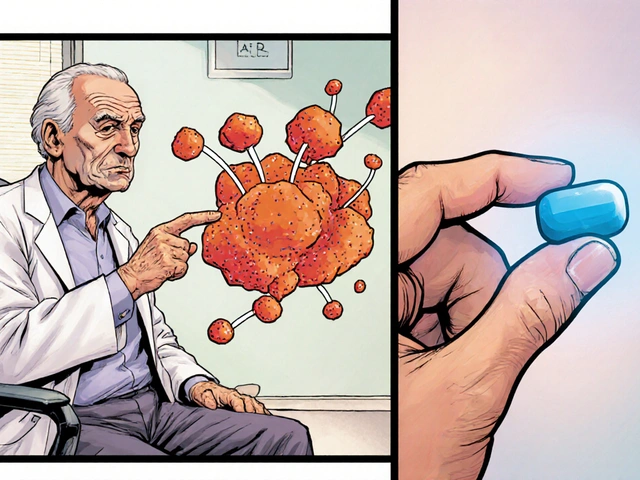Hypercholesterolemia: What You Need to Know Right Now
High cholesterol—officially hypercholesterolemia—raises your risk for heart attacks and strokes. You won't feel it, so testing matters. This page gives simple, practical steps to understand causes, read your cholesterol numbers, and decide when lifestyle changes are enough or when medicine helps.
Causes & Risks
Cholesterol comes from your liver and the food you eat. Bad habits like eating lots of saturated fat, being inactive, or smoking raise LDL (the “bad” cholesterol). Age, genetics, and conditions such as diabetes, hypothyroidism, or kidney disease also drive levels up. Some meds, like certain steroids or HIV drugs, can increase cholesterol too. If close family members had early heart disease, you might have familial hypercholesterolemia—a genetic form that needs early treatment.
Numbers matter: LDL is the key target most doctors watch. For many people, an LDL under 100 mg/dL is fine. If you already have heart disease or are at very high risk, doctors often aim for LDL under 70 mg/dL. Talk with your clinician to set the right goal for you.
How to Lower Cholesterol
Start with food: swap butter and fatty red meat for olive oil, fish, beans, and nuts. Eat more oats, barley, fruits, and veggies for fiber that helps lower LDL. Add fatty fish twice a week for omega-3s, and use plant sterols (found in some fortified foods) if you want extra benefit. Cut processed foods and avoid trans fats—those raise bad cholesterol fast.
Move more: aim for about 150 minutes a week of moderate activity like brisk walking, or 75 minutes of vigorous exercise. Even small steps—30 minutes most days—help raise HDL (the “good” cholesterol) and lower LDL. Losing 5–10% of body weight often improves cholesterol numbers noticeably.
Quit smoking and limit alcohol. Smoking lowers good cholesterol and damages arteries. Alcohol can raise triglycerides, another blood lipid to watch.
If lifestyle changes aren’t enough, medications are effective. Statins are the most common and reduce heart risk beyond just lowering LDL. Other options include ezetimibe, bile acid sequestrants, and newer PCSK9 inhibitors for high-risk cases. Your doctor will pick the right drug based on your risk, side effects, and other health issues.
Testing schedule: a fasting lipid panel shows total cholesterol, LDL, HDL, and triglycerides. If you start treatment, expect a follow-up check in 4–12 weeks to see how you’re responding, then every 3–12 months until stable, and yearly after that for most people.
When to see a doctor now: if you have a strong family history of early heart disease, visible fatty bumps on tendons (xanthomas), very high cholesterol on a test, or symptoms like chest pain—get medical advice quickly. Otherwise, ask your primary care clinician about a baseline lipid test and a plan you can stick to.
Small, consistent changes add up. Use diet swaps, regular activity, and medical guidance when needed to keep cholesterol under control and protect your heart.

The Role of Nuts and Seeds in Managing Hypercholesterolemia
As a health-conscious individual, I've recently discovered the importance of nuts and seeds in managing hypercholesterolemia. These nutrient-dense foods are packed with heart-healthy fats, fiber, and other essential nutrients that can help lower cholesterol levels. By incorporating a variety of nuts and seeds, such as almonds, walnuts, flaxseeds, and chia seeds, into our daily diet, we can potentially decrease the risk of heart disease. It's truly fascinating how these small yet powerful food items can make such a significant impact on our overall health. I'm definitely going to make a conscious effort to include more nuts and seeds in my meals from now on.
Categories
- Medications (50)
- Health and Medicine (46)
- Health and Wellness (34)
- Online Pharmacy Guides (15)
- Nutrition and Supplements (7)
- Parenting and Family (3)
- Environment and Conservation (2)
- healthcare (2)
- prescription savings (1)



